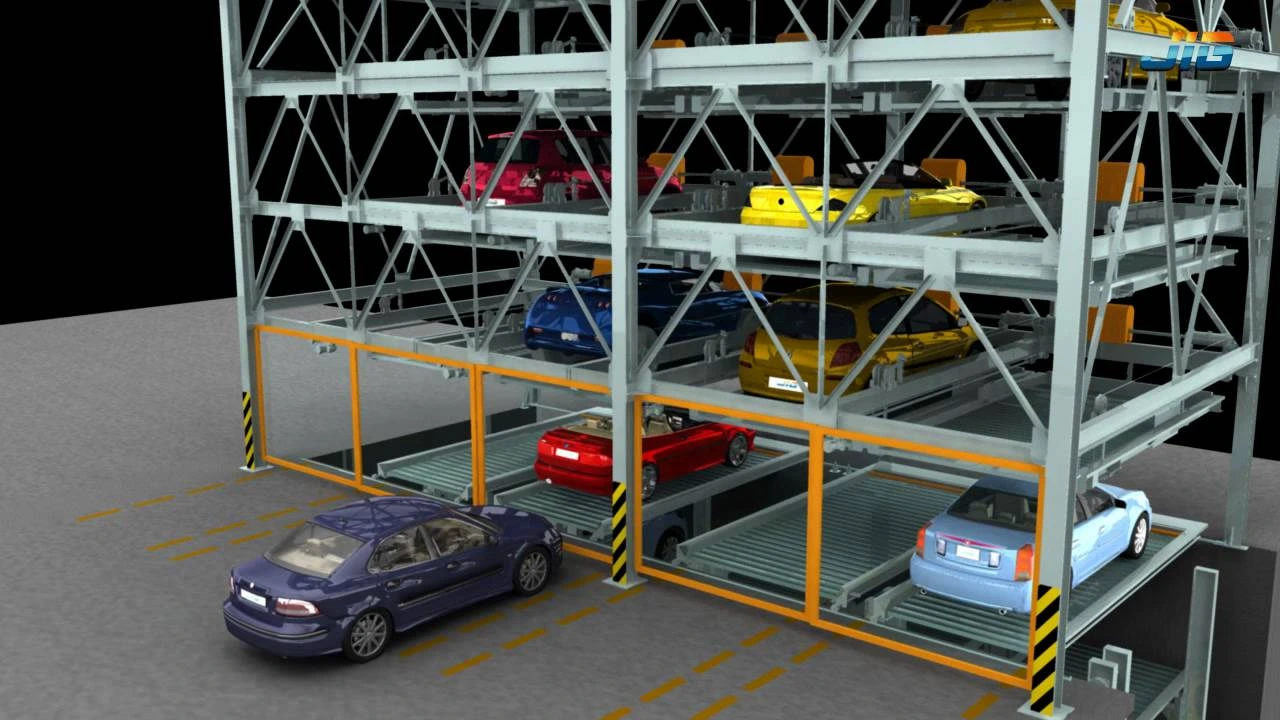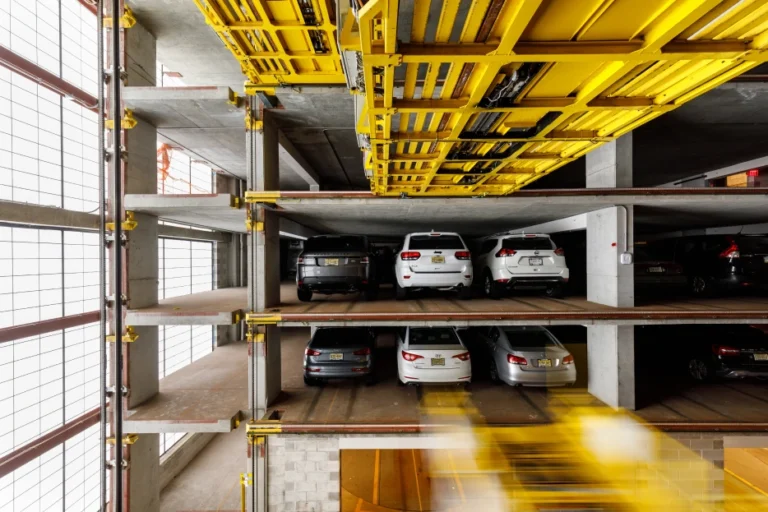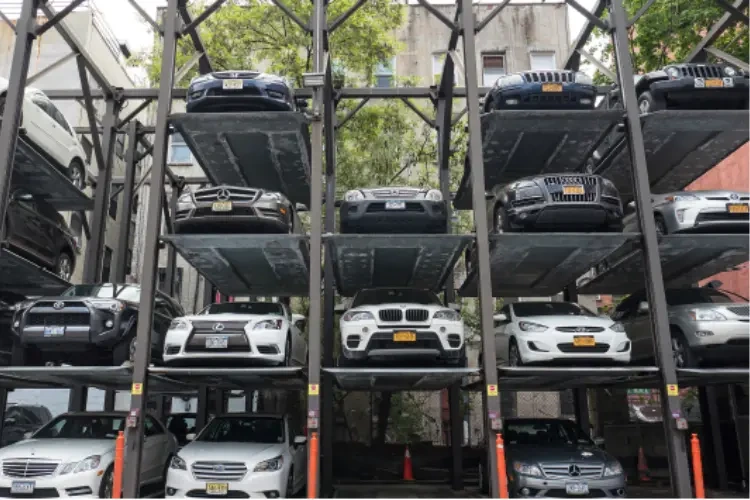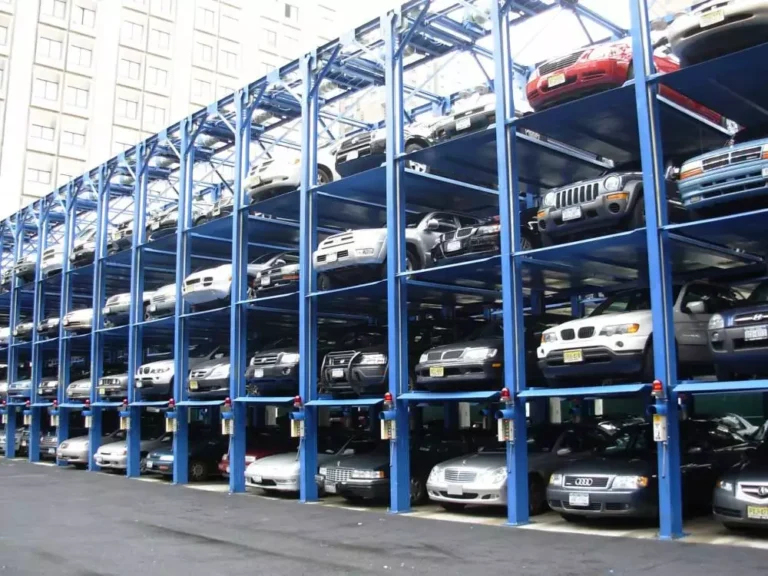
Once cities started growing rapidly and people began moving in large numbers to the urban areas, the number of vehicles on the streets rose dramatically. The availability of spaces for parking, however, has not been able to follow this trend. Besides, traditional ways of parking, as open lots and parking by ramps, are not only consuming a huge amount of space but are also often inefficient in accommodating the increasing number of vehicles. This has put the city in a position of having an urgent and pressing need for the development of astonishing parking solutions that will be able to use the space to the fullest and at the same time to maintain the friendliness and safety of the parking.
One of the most famous examples of a Mechanical parking system is the Mechanical Parking System (MPS) which is an extremely space-saving device, powered by a high level of technology, that uses a mechanical lifting and moving system to shift the vehicles in such a way as to save space and provide a better organization of the vehicles. In the case of traditional parking systems, the driver has to navigate the cars by going through the ramps or driving through different levels, but in mechanical parking systems, the operations are automatized and they make the vehicles move vertically and horizontally into specific parking spaces by using elevators, pallets, or conveyors.
It is, in fact, the mechanical parking system as a contemporary engineering achievement that alleviates one of the most critical problems of city life — the shortage of efficient and secure parking spaces. These systems are gaining, by the continuous automation and smart city technologies, a bigger and bigger role in the realization of sustainable urban development.
Mechanical parking system is a type of architecture that is changed by a machine, which, without human input, gets, transports, and stores cars in a multi-story manner. The drivers only have to park the vehicle in the access point, and the system will move it for them, there is no need for them to drive inside the structure.


1. Fully Automated Operation
Contemporary mechanical parking systems operate in a fully automated manner. No human assistance is required for the entire vehicle parking and retrieving process, which is done by machines and software. The driver just parks the car at the access point and the system automatically lifts, moves, and stores the car in an empty slot.
2. Space Efficiency
The capability of these systems to accommodate more vehicles is one of their main features. In comparison to taking up an equal area of a traditional parking lot, a mechanical system can put cars in the same space from 2 to 5 times more by stacking them vertically and arranging them in compact layers. Hence, it is a great solution for cities with limited space.
3. Computer-Controlled System
The computerized control unit is the managing body of the entire operation often assisted by Programmable Logic Controllers (PLCs). The quoted systems ensure the vehicle’s movement’s exactness, keep a check on every component, and perform task automatically with minimum faults. The program also logs information like slot usage and the position of the vehicle.
4. Smart Sensors and Detection
Refined infrared and ultrasonic sensors are being used to find out the car’s size, location and if there are any obstacles. These sensors hold responsibility for safety during the movement and preventing accidents or overloading. The machine will not even start if the vehicle is not properly aligned and the entrance is occupied.
5. Fast Parking and Retrieval
They design modern systems to operate quickly. A few minutes are enough for the lift and conveyor to carry out the parking or retrieval of the car after the vehicle is scanned and the slot is assigned. The time some systems can get a car back is less than 2 minutes, thus the waiting period for users is minimized.
6. High Safety Standards
There are no compromises on safety in mechanical parking systems. Several safety features like emergency stop buttons, overload protection, door interlocks, anti-fall devices, and alarm systems are installed to ensure safety. The system checks for your safety by making sure no people are inside the operating zone when the movement begins.
7. Environment-Friendly Operation
Mechanical parking systems are good for the environment as they do not let drivers waste time looking for parking spaces. This cuts down fuel consumption and carbon emissions thus making the urban environment cleaner.
8. Low Vehicle Damage Risk
Since all vehicle movements are done using machines and drivers are not allowed in the parking zone, there are little chances of vehicles getting scratched, dented, or falling into accidents. Cars remain stationary and are not handled by other people during storage.
9. Secure Parking
When a car is kept in a secure and covered area it is safe from the dangers of the environment, theft, and vandalism. The use of a card, code, or ticket system is the only way for the owner or authorized staff to get the car back.
10. User-Friendly Interface
Modern systems have simple and straightforward user-friendly interfaces which include touchscreens, RFID cards, tokens, or mobile apps. These make vehicle entry, payment, and retrieval easy and convenient without confusion.
11. Power Backup System
In order to guarantee continuous operation, especially in cities where power supply may be an issue, most mechanical parking systems are equipped with a battery or generator backup. The function of this feature is to assist vehicle retrieval even when power failure occurs.
12. Durable and Reliable Structure
Among the main characteristics of the mechanical parking system is the employment of high-strength steel type materials which are not only strong but also have high resistance against rust or other kinds of corrosion so that the system can be used for heavy loads and different environmental conditions. Part of the successful operation of the system is its regular service.
13. Compact Footprint
It is different from traditional parking in multiple ways, one of which being the fact that in mechanical parking no wide lanes and ramps are needed and the area taken up by the parking is small. Due to this, there remains open space that can be utilized for planting, people’s areas, or facilities.
Mechanical parking systems aims to offer maximum car parking capacity within a minimum allocated area, and thus becomes the best solution for city, where space is a critical factor. It is practically impossible to build a conventional parking area with the same number of cars vertically as desired in that system, while avoiding their interaction and large covered areas; these systems work differently from the traditional ones by vertically stacking cars thus several cars can be parked in one and the same ground area, which in the constructions that are normally used would be enough for one or two cars only.
Apart from the vertical stacking, many systems use the horizontal shifting methods such as conveyors, shuttles, or sliding platforms, which allow cars to be parked closely side by side in a way that there is no need for wide maneuvering lanes. By eliminating the ramps and the driving lanes, mechanical parking systems come to reduce even more the parts that are left unused while at the same time making every part of the parking space productive for parking. Furthermore, these systems can be adapted to accommodate irregular plots, narrow lots, rooftops, or underground spaces by ensuring that areas that are not suitable for conventional parking are being fully utilized. Most of the modern designs are typically modular as well as scalable, thus allowing the addition of layers or units to meet the growth of demand, which in effect will greatly enhance the vehicle density. Consequently, by the employment of the vertical stacking, horizontal movement, and compact layout designs, mechanical parking systems are able to accommodate from two to five times more vehicles than those of traditional parking in the same area, thus offering a highly efficient and space-saving solution for urban development.

1. Space Efficiency
One of the main advantages of mechanical parking systems is their space saving potential. These systems typically employ vertical and compact designs that can accommodate more cars in a smaller area than traditional parking spaces, thus not only making the use of the available space more effective but also allowing for the preservation of the land. This is why they are very suitable for cities with a high price for land. These systems eliminate the space usually occupied by ramps and driveways and as a result, they can hold from two up to five times more vehicles.
2. Cost Savings
Though the equipment required might be expensive in the beginning, mechanical parking systems significantly save costs in the long run by lowering the land requirements and related labor expenses. There are fewer attendants present, and less structural space is needed for the project, leading to reduced overall project costs.
3. Convenience & Faster Parking
By the time the user is parking his/her car, he/she can also make the phone call to the parking service, so that the car will be ready for him/her to pick it up. This factor definitely brings not only time, but also a lot of comfort to the users. In addition, cars are automatically stored and carried out, generally in a few minutes, which basically means that the users sometimes do have to wait for a while a short time.
4. Enhanced Safety
Few accidents happen in situations where everything is controlled and sensors and machinery move the vehicles. Besides that, the place is very secure for people who have cars and their vehicles as well. It has been fully furnished with an array of security features such as sensors, alarms, and locks to ensure the safety of the users and their cars.
5. Security
The cars have been parked in a well-secured place in which access is strictly controlled, a closed circuit television surveillance, and safe entry/exit systems are provided. These factors prevent wild access and keep the vehicles from the environment.
6. Flexibility and Customization
Such a parking solution can be located at any of these places: above ground, underground, on the roof of a building, or as a part of the building itself. They are also easy to be changed in size as they are both modular and scalable which gives benefit not only in different sizes of projects but also sites that have different conditions.
7. Real-Time Monitoring and Management
Smart software connects with the parking system, enabling customers to see information about available parking slots, system status, and when maintenance is required in real-time. This ensures smooth functioning, reduction of downtime and can also be linked with applications or smart cards for easy user interaction.
8. Increased Property Value
These systems indeed add value to the property that already has a great potential to be developed into a quality one by saving space and providing advanced parking convenience. In fact, they liberate parcels of land from commercial or residential purposes and make tenants or buyers visit the property more upon noticing this remarkable fact.
Mechanical parking system of the future are rapidly changing due to their technological advancements, the rise of the city, and the increasing demand for efficient and conservation infrastructure. One of the most significant changes in trend is the connection with autonomous vehicles. This enables self-driving cars to navigate and park themselves in automated facilities, thus saving time, effort, and the overall productivity of the system. Not to forget that sustainability is another crucial aspect, which comes to the fore as future installations continually rely more on EV charging stations, energy-saving lifts, or environmentally friendly materials among others. Besides this, the creative potential just serves to accentuate their advantages as these systems evolve to address the diverse needs of development ranging from the multifamily residential to mixed-use projects progressing in layout capacity or operational flow.
The use of such apparatus is not only limited to the inner city any longer, and they are freely expanding into the suburban areas where land cost is soaring and there is a need for proper utilization of the available areas due to the massive influx of people. It is safe to expect that these futuristic designs will incorporate safety as well as security features such as AI cameras for surveillance, fire extinguishing systems, automated emergency response that guarantees the safety of the vehicles and the users.
Moreover, the technologies’ maturing and widespread acceptance lead to a gradual lowering of the implementation costs, consequently, it becomes available in smaller projects, as well as to developers. Future trends essentially evolve to the automation of parking highly based on environmental sustainability, security, as well as adaptable solutions that convert the way urban and suburban spaces manage vehicle storage while tackling space constraints and modern mobility demands.
A free site assessment schedule | Download Product List | Instagram